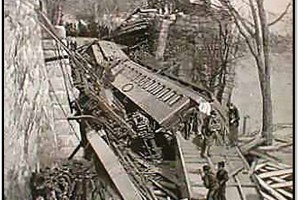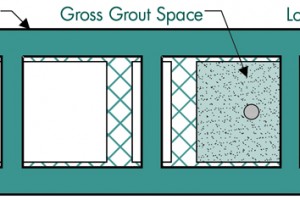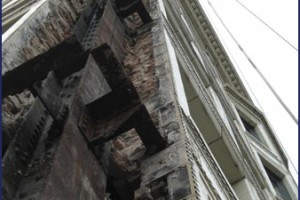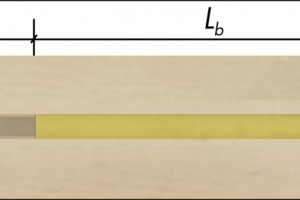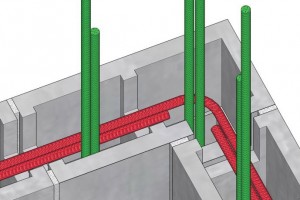Although most engineers in the U.S. have at least a passing acquaintance with American Institute of Architects (AIA) documents, few seem familiar with FIDIC documents. Because FIDIC documents are often used on construction projects where the participants are from different countries, engineers pursuing international projects would do well to learn about them.
…Review Category : Articles
Concrete has been used for thousands of years. Today, it is the most utilized construction material in the world. Modern concrete is so ubiquitous because of its unmatched compressive strength, fresh-state malleability, and long-term durability, as well as the global availability of raw material resources.
…The Boston & Providence Railroad built the Dedham Branch running southwesterly from Boston towards Dedham, Massachusetts. The 120-foot-span Bussey Bridge was located six-miles out of Boston and crossed South Street in Roslindale at a 45-degree skew angle. Originally a wooden bridge, sized for two tracks but only carrying one, it sat on masonry abutments. It was called the “Tin Bridge” as the wood was covered with tin to minimize the threat of fire. As the wood decayed, one of the wooden trusses was replaced with an iron Whipple Truss bridge, and the deck structure was supported by this hybrid bridge. In 1876, the railroad decided to replace the remaining wooden truss with another iron truss. Engineering News described the bridge as follows,
…CASE has recently updated CASE 962-D: A Guideline Addressing Coordination and Completeness of Structural Construction Documents. It remains one of the most popular publications, and for a good reason. The AEC industry continues to identify the lack of quality of structural drawings as a significant issue, even as we approach 20 years since 962-D was created.
…There seems to be a lot of angst among structural engineers about our profession, a general notion that we do not get the credit that we deserve or the proper amount of respect from the public. It is as if we work in the Rodney Dangerfield of professions, “I don’t get no respect.” However, having recently read Samuel C. Florman’s book, The Existential Pleasures of Engineering, first published in 1976, it is clear that our concerns for our profession are not new. Many of the concerns Florman had 44 years ago continue to this day, such as not attracting enough of the best and brightest students, engineering education being too technical, lack of passion for our work, lack of exposure for engineers in popular culture such as novels or movies, and not getting the same respect as other professions. Since then, other concerns have developed, such as not retaining talent, not adopting new technology quickly enough, and being replaced by technology.
…When I reflect on my experience as an association volunteer, I am honestly surprised that I now serve as NCSEA President. Ten years ago, I was on the Board of Directors for the Structural Engineers Association of Oregon (SEAO). At that time, I was relatively naive about NCSEA. Despite the great work that NCSEA was doing on behalf of the profession, I only knew them as being part of the group that published STRUCTURE magazine. Luckily for me, an amazing structural engineer, the late Sue Frey, intervened a couple of years into my term on the SEAO Board and drastically changed my perception and understanding of NCSEA. I realize now that this simple shift in perception was made possible by my willingness to drink some Kool-Aid.
…The next edition of the Masonry Society’s TMS 402/602, Building Code Requirements and Specifications for Masonry Structures, is due to be published in 2022. Some of the anticipated changes are reviewed in this article, including some things that designers can use now. One of the most significant changes is not a technical change but a change in the length of the code cycle. The Masonry Society board approved a trial six-year cycle for updating the code in response to feedback from practicing engineers who are being overwhelmed by the constantly changing codes. The six-year cycle also enabled the committee to tackle larger issues.
…Building codes and standards are typically enacted in response to hazardous situations that threaten public health, safety, and welfare, or to natural disasters such as floods, fires, and earthquakes. Fire protection was the first major issue leading to the establishment of early building codes in the United States. In 1896, the National Fire Protection Agency (NFPA) was founded to establish uniform sprinkler standards for the mills and warehouses in the Northeast. First published in 1897, NFPA standards were used until the 1950s. Modern structural related building codes were first introduced in the United States around 1900 in cities such as New York and Chicago.
…The Key to Mass Timber Construction
Part 3: Design Guidelines for Glued-in Rods
This is the third part of the series of articles on modern wood fasteners. Part 1 (STRUCTURE, August 2020) focused on self-tapping screws (STS). Part 2 (STRUCTURE, February 2021) introduced the reader to glued-in rods (GIR) and the components making up these joints. This concluding part summarizes design guidelines for the GIR connections. Despite the interest among designers of mass timber construction, there is no official recognition in U.S. and Canadian design codes for GIR connections. This article sheds light on the state of the art of this emerging technology. We caution the reader that this an area of development without code approvals in the U.S. and Canada – the content is provided as informational and is not to be used for design.
…Structural engineering education includes fundamental principles of mechanics of materials and structural analysis that help engineers to understand and design structural members and systems. Occasionally, it is necessary to wander into design considerations outside of the structural realm, such as corrosion protection and serviceability. Still, rarely are structural engineers taught to prioritize constructability as a primary focus of structural design. This consideration often comes with experience as it is learned that the most efficient or elegant structural solution is not always the easiest to construct or (arguably more important) the least expensive. Structural engineers’ limited education on masonry materials and limited exposure to masonry construction processes can magnify installation issues. This article highlights how engineers can avoid some of the most common constructability issues with modern structural masonry.
…


